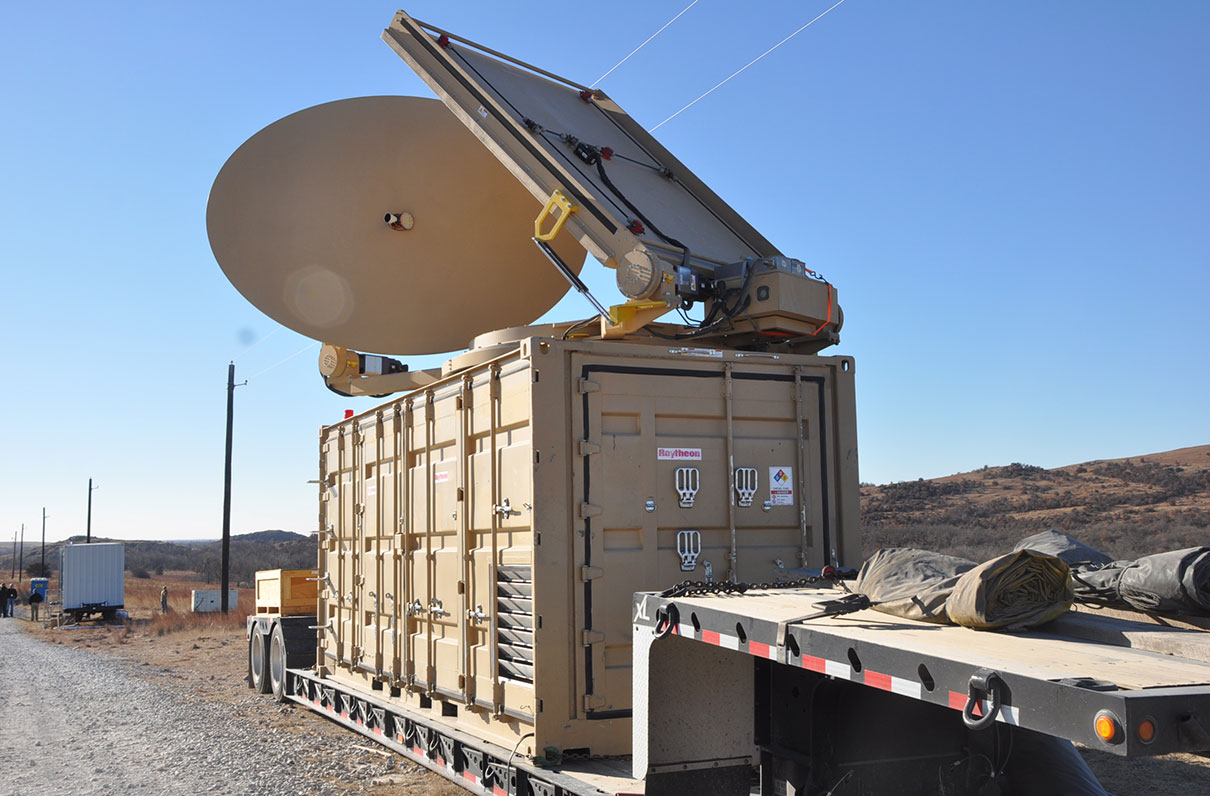Raytheon has successfully demonstrated the ability of its high-power microwave system to defeat multiple drones, first while still in development at a test at the U.S. Army's Yuma Proving Ground in Arizona and then twice at Fort Sill, Okla., downing 33 drones and unmanned aerial vehicles (UAV) earlier this year.
Raytheon's advanced high-power microwave system, in the latest test at Fort Sill, was able to engage multiple UAV swarms, defeating two and three at a time, as well as larger swarms.
Susan Kelly, site director for Raytheon Albuquerque, says the system currently fits in a 20-foot transfer container, but Raytheon is working to get the system into a space half that size or less.
"The unique antenna we developed is a key part of the system," Kelly says, "because we are trying to get as much power output as possible in as small a package as we can. Over the course of the system's development, we've increased its performance and reliability, so that now it can exist on the battlefield and integrate with other systems."
Kelly notes that while the Army and Air Force are using different types of radar systems, Raytheon's high-power microwave system can be integrated into their hardware or used as a stand-alone system.
"The Army has told us they would like something that is mobile, and we can easily fit the system in a 10-foot transfer container that can be mounted on the back of a vehicle," Kelley says. "Our new concept antenna is the thing that makes the system more flexible and mobile."
Kelly says the microwave system works like a traditional radar but is "extremely high-powered and has a unique antenna that can tolerate that power level and is much more capable that a traditional antenna."
She says that during the last test at Fort Sill, the system was able to bring down 33 drones and UAVs, including eight in a single scenario.
"Our high-power microwave system is a counter-swarm system," she says. "As small drones are becoming more available, cheaper, and useful to our enemies, who are placing sensors and IEDs (improvised explosive device) on them, we are much more susceptible to coordinated drone attacks."
Kelly points out there are several advantages of the high-power microwave system over a laser system.
"Our system can take out multiple UAVs in its main beam, which is very broad with a very short pulse width, which gives an immediate result," she says. "Lasers create heat on a target and take much longer to affect the target, while microwaves take nanoseconds. The high-power microwave system is able to take out multiple drones immediately and then retarget to another vector."
Kelly says Raytheon is working on making the system more robust, smaller, more easily used, and more easily integrated with the systems of other military services.
"A high-power microwave has an unlimited magazine," she says. "It can fire millions of times, and you don't have to replace anything, no materials or chemicals need to be refurbished, and we expect maintenance to be months or years, not days or hours."
About the author: Alan M. Petrillo is a Tucson, Ariz., journalist who writes for national and regional magazines and newspapers. He's the author of several books on historical military firearms; two historical mysteries, Full Moon and Asylum Lane; and his latest historical thriller, A Case of Dom Perignon; all available at www.amazon.com.
